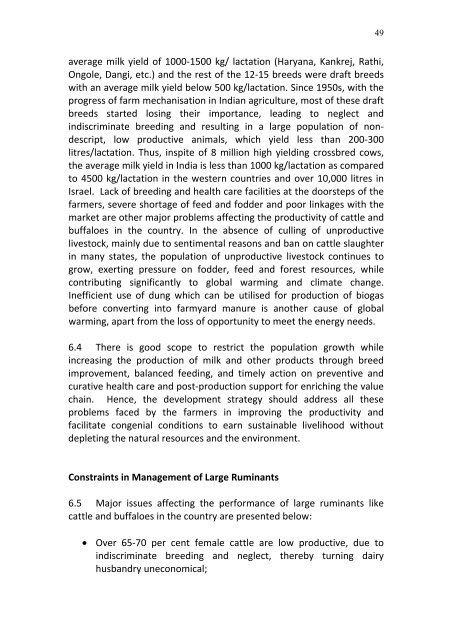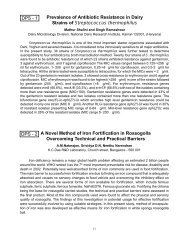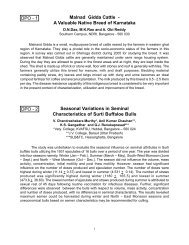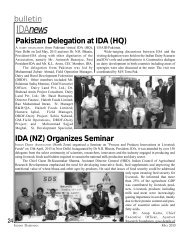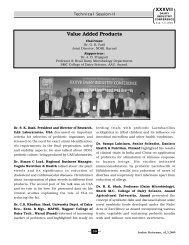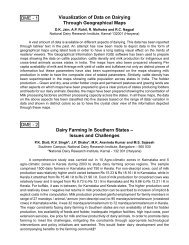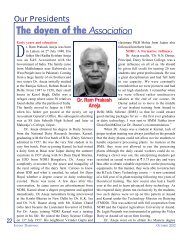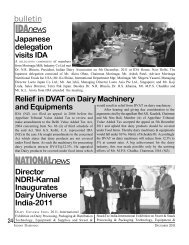Volume - Indian Dairy Association
Volume - Indian Dairy Association
Volume - Indian Dairy Association
- No tags were found...
Create successful ePaper yourself
Turn your PDF publications into a flip-book with our unique Google optimized e-Paper software.
49average milk yield of 1000‐1500 kg/ lactation (Haryana, Kankrej, Rathi,Ongole, Dangi, etc.) and the rest of the 12‐15 breeds were draft breedswith an average milk yield below 500 kg/lactation. Since 1950s, with theprogress of farm mechanisation in <strong>Indian</strong> agriculture, most of these draftbreeds started losing their importance, leading to neglect andindiscriminate breeding and resulting in a large population of nondescript,low productive animals, which yield less than 200‐300litres/lactation. Thus, inspite of 8 million high yielding crossbred cows,the average milk yield in India is less than 1000 kg/lactation as comparedto 4500 kg/lactation in the western countries and over 10,000 litres inIsrael. Lack of breeding and health care facilities at the doorsteps of thefarmers, severe shortage of feed and fodder and poor linkages with themarket are other major problems affecting the productivity of cattle andbuffaloes in the country. In the absence of culling of unproductivelivestock, mainly due to sentimental reasons and ban on cattle slaughterin many states, the population of unproductive livestock continues togrow, exerting pressure on fodder, feed and forest resources, whilecontributing significantly to global warming and climate change.Inefficient use of dung which can be utilised for production of biogasbefore converting into farmyard manure is another cause of globalwarming, apart from the loss of opportunity to meet the energy needs.6.4 There is good scope to restrict the population growth whileincreasing the production of milk and other products through breedimprovement, balanced feeding, and timely action on preventive andcurative health care and post‐production support for enriching the valuechain. Hence, the development strategy should address all theseproblems faced by the farmers in improving the productivity andfacilitate congenial conditions to earn sustainable livelihood withoutdepleting the natural resources and the environment.Constraints in Management of Large Ruminants6.5 Major issues affecting the performance of large ruminants likecattle and buffaloes in the country are presented below:• Over 65‐70 per cent female cattle are low productive, due toindiscriminate breeding and neglect, thereby turning dairyhusbandry uneconomical;


